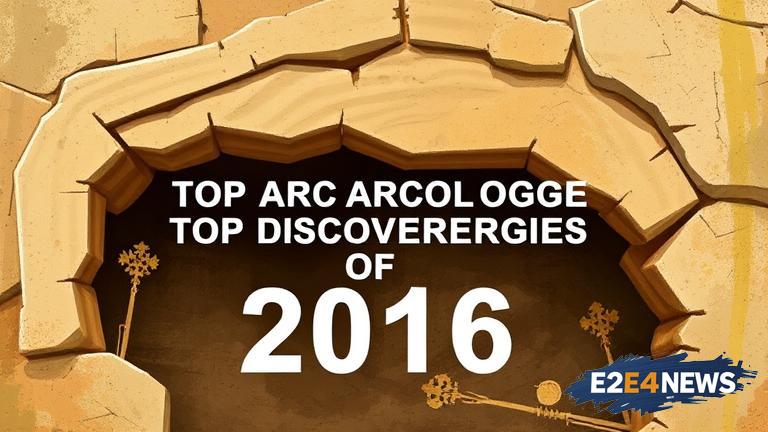The year 2016 was marked by numerous significant archaeological discoveries that shed new light on the past. One of the most notable findings was the Antikythera skeleton, which was discovered in a shipwreck off the coast of Greece. The skeleton is believed to be over 2,000 years old and has provided valuable insights into the lives of ancient Greeks. Another major discovery was the finding of a lost city in Honduras, which was hidden deep in the jungle for centuries. The city, known as Ciudad Blanca, is believed to have been inhabited by an ancient civilization that was previously unknown. In addition to these discoveries, 2016 also saw the uncovering of a ancient Roman villa in Britain, which featured elaborate mosaics and other artifacts. The villa is believed to have been built during the 1st century AD and provides a unique glimpse into the lives of Roman aristocrats. Furthermore, archaeologists in Egypt discovered a tomb that is believed to be over 3,000 years old, which contained a number of well-preserved mummies and other artifacts. The tomb is thought to have belonged to a high-ranking official during the New Kingdom period. Other notable discoveries included the finding of a ancient temple in Israel, which is believed to have been built during the Iron Age, and the discovery of a number of ancient artifacts in China, including a collection of terracotta warriors. The terracotta warriors are believed to have been created during the Qin Dynasty and are considered some of the most significant archaeological discoveries of the 20th century. In addition to these discoveries, 2016 also saw the development of new technologies and methods for analyzing archaeological data, including the use of drones and other aerial vehicles to survey and excavate sites. These advancements have enabled archaeologists to gather more accurate and detailed information about the past, and have opened up new possibilities for future discoveries. Overall, 2016 was a significant year for archaeology, with a number of major discoveries that have shed new light on the past and provided a unique glimpse into the lives of ancient civilizations. The discoveries of 2016 have also highlighted the importance of continued exploration and research into the past, and have demonstrated the significant contributions that archaeology can make to our understanding of human history. As archaeologists continue to explore and analyze the past, it is likely that many more significant discoveries will be made in the years to come. The study of archaeology is an ongoing process, and one that requires continued dedication and effort. By examining the discoveries of 2016, we can gain a better understanding of the significance of archaeology and the importance of preserving our cultural heritage. The discoveries of 2016 have also demonstrated the importance of international collaboration and cooperation in the field of archaeology, and have highlighted the need for continued support and funding for archaeological research and excavation projects.
